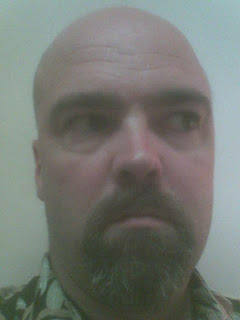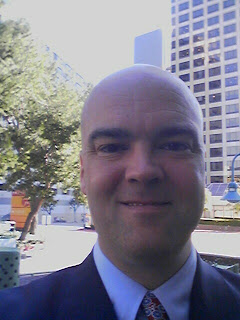After that, I ventured to Los Feliz to listen to a panel on L.A. history, featuring Kevin Roderick (of LA Observed), D.J. Waldie, and Mike Eberts. Each of the panelists had written books about the neighborhoods they had grown up in, and provided fascinating tips on researching and developing leads into the study of local history. More importantly, they approach their subjects without resorting to cliches and stereotypes; there is much more to Los Angeles (meaning the region, not the city) than Hollywood, and although Chinatown is a great movie, it's worthless history.
One thing Mr. Eberts mentioned that gave me some ideas for further research is about one of the greatest creations ever developed on the West Coast: the Pacific Coast League from 1903 to 1957. As the son of a Hollywood Stars fan, and the grandson of an LA Angels booster, I heard stories for years about Jigger Statz, Lefty O'Doul, Bobby Bragan, Steve Bilko and Carlos Bernier, great local ballplayers who only enjoyed marginal success in the Bigs, as well as afternoons spent at Gilmore Field (located next door to Farmers Market) and Wrigley Field, which lasted long enough for the big league Angels to play its expansion season there.
Through most of its history, the PCL enjoyed a great deal of independence from the major leagues; it developed (and held on to) its own stars, and maintained rivalries and pennant races of its own for fans to cherish. In the late-40's, the then-owner of the Stars, Bob Cobb (of Cobb salad fame) attempted to interest big league owners by seeking to bring the PCL en masse as a third "major league". Had it succeeded, west coast baseball might have been spared years of attendance worries in Seattle, San Diego and the Bay Area, since the PCL had longstanding outfits in each of those cities, and fans elsewhere would have avoided seeing teams hopscotch from city to city. In one of the most short-sighted decisions in history, major league owners turned him down.
Sadly, in 1957, the League was irrevocably altered by the decision of Walter O'Malley and Horace Stoneham to move their teams to Los Angeles and San Francisco, respectively. Overnight, the three wealthiest teams in the league, the Angels, Stars and San Francisco Seals, moved to smaller locations, and as with the Negro Leagues after Jackie Robinson integrated the Brooklyn Dodgers, its fans focused their attention away from their own local product and towards the Major Leagues. Today, the PCL has only a couple of teams on the Pacific Coast, and is just another minor league.
As it turns out, there is a dearth of information on the internet about the history, the lore and the trivia about the PCL. This site provides a general overview of the glory years of the league, while my late father would be charmed by the anecdotes this space has about his beloved Stars. For example, before the Hollywood Stars, there was another team that shared the area with the Angels, the Tigers, which alternated their seasons between Venice and Vernon (a small town north of L.A.), and which was owned for a time by Fatty Arbuckle.

To get a real taste of what the Angels-Stars rivalry was like, check out this story, about the Great War of 1953, an on-field melee so brutal the L.A.P.D. had to come on the field and separate the players.
 Més que -- un blog
Més que -- un blog 
No comments:
Post a Comment